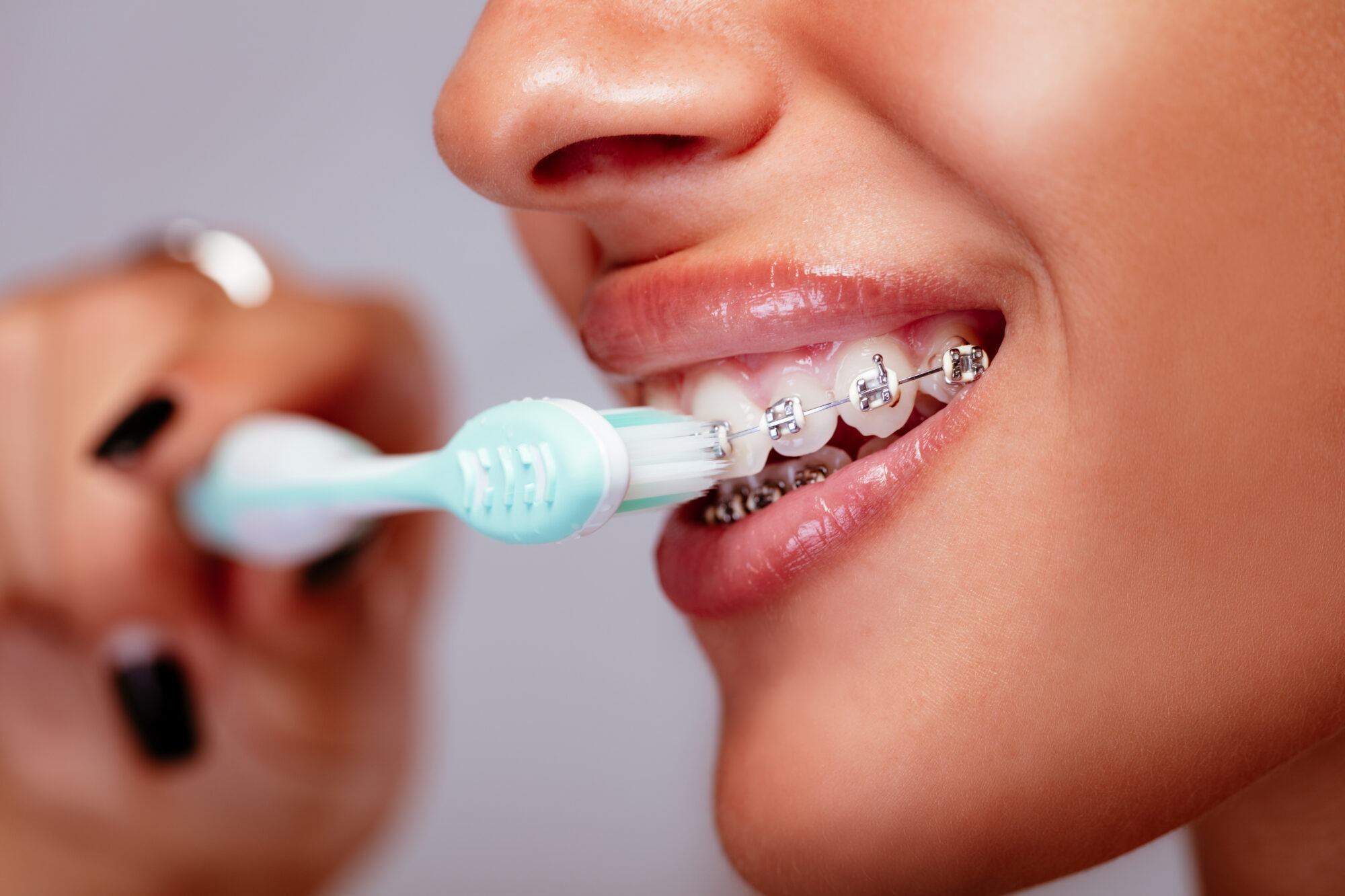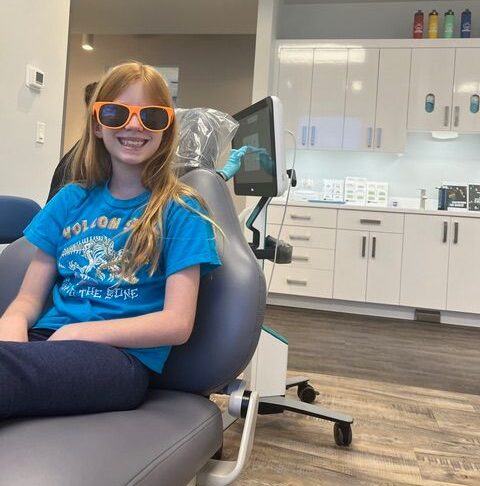Just got braces in Billings? Great! But what are the best ways to brush and floss when you have braces? Dr. Hecht and our Montana Smiles Orthodontics team can fill you in.
The Challenge of Oral Care with Braces
Braces level up your smile but also change how you think about your oral care. While braces work to align your teeth, they do have a noticeable side effect. New spots where food particles and plaque can develop. Now, your oral hygiene routine has some additional variables. If you’re not careful, these hidden spots can become breeding grounds for bacteria. Yuck! That might mean more cavities, gum issues, and even bad breath.
The wires and brackets of traditional braces pose a particular challenge. They can obstruct your toothbrush. You might have a hard time reaching certain areas of your teeth. Flossing can become an obstacle, too. Why? You’ll have to get around the wires to clean between your teeth. Even mouthwash can’t access the places it needs to.
Poor oral hygiene can affect your dental health and hinder your orthodontic treatment. Plaque buildup can cause discoloration around the brackets. Discoloration leaves you with unevenly colored teeth once your braces come off. Worse yet, neglecting your oral care could extend the time you need to wear your braces. Nobody wants their perfect smile delayed!
How to Brush with Braces
Brushing your teeth with braces? It might feel like learning to brush all over again. It takes a few extra steps, but it’s a breeze once you get the hang of it. The key is to be thorough and gentle. That way, you can avoid damaging your braces while keeping your teeth squeaky clean.
Dr. Hecht recommends using a soft-bristled toothbrush and fluoride toothpaste. These are your basic tools for a healthy mouth. Now, angle your toothbrush at a 45-degree angle to your gums. An angle like this helps you get to the edge of your braces. Remember, that’s where plaque builds up.
Next, focus on the brackets. Angle your toothbrush downwards to clean the tops and upwards to tackle the bottoms. Make sure you brush each tooth individually, spending about 10 seconds on each. This ensures you’re giving every nook and cranny the attention it deserves.
Remember the backs of your teeth and the chewing surfaces. These areas are just as important and need their share of the spotlight. Finish off by brushing your tongue and the roof of your mouth. This helps to remove bacteria and keeps your breath fresh.
Flossing: The How-To
A little nervous about flossing around your braces? Not to worry! It’s essential for keeping your gums and teeth in good shape. The wires and brackets create small spaces where food particles can get trapped. So, it might seem like flossing is a pain. How do you go about it with braces?
First, you’ll need the right tools. A floss threader or orthodontic floss is your new best friend. These handy gadgets help you get the floss under the wire and between your teeth. Once you’ve threaded the floss, gently move it up and down along the sides of both teeth. Don’t forget to go below your gumline.
If you find traditional flossing too time-consuming, consider using a water flosser. A water flosser uses a stream of water to dislodge food particles and plaque. You might find that it’s a convenient alternative.
At Montana Smiles Orthodontics, we can’t stress enough the importance of flossing daily. It’s a habit that pays off whether or not you have new braces. Skipping this step can lead to plaque buildup (gross!) and gum issues (no thanks!). Plus, it can even prolong the time you’ll need to wear your braces.
Tools to Make Your Life Easier
When it comes to oral care with braces, a little help goes a long way. Thankfully, there are some nifty tools designed to make your life easier. One such tool is the interdental brush. It’s a tiny brush that can slip between your wires and brackets. Consequently, it reaches those spots your regular toothbrush might miss. It’s perfect for a quick clean after meals when you’re on the go.
We briefly mentioned water flossers earlier. Have you tried one before? They use a high-pressure stream of water to wash out bits of food and plaque from between your teeth and braces. They’re really helpful if you find flossing with braces a hassle. However, remember that a water flosser is a supplement to, not a replacement for, regular flossing.
Orthodontic wax can also come in handy. If a wire or bracket is irritating, a small piece of wax can provide a smooth barrier between the metal and your mouth.
Montana Smiles Orthodontics’ Top Tips
Our Montana Smiles Orthodontics team does more than help teeth walk the line. We empower you to take ownership of your oral health. Keep these top tips in mind to maximize your oral health.
First and foremost, prioritize regular check-ups with Dr. Hecht. These visits are crucial for catching potential issues before they become big problems. Professional cleanings in our Billings office can eliminate any plaque or tartar you might have missed.
Diet matters, too. Braces come with some food restrictions. Chief among them is avoiding sugary and acidic foods. Why? Sweet treats can lead to cavities. Opt for smile-saving options like fruits, vegetables, and dairy products.
Hydration is key also! Drinking water helps to eliminate food and bacteria. Hydrating reduces your risk of plaque buildup. It’s a simple yet effective way to keep your mouth clean throughout the day.
Last but not least, listen to Dr. Hecht’s advice. Did he recommend a specific tool or technique? Follow it to a “T.” We’re here to guide you every step of the way, ensuring you get the best results possible.
We Keep Montana Smiling
Those tips are for keeping your teeth in tip-top shape while working on that dream smile. But our Montana Smiles Orthodontics team has more! Curious for more hints and tips? Go here to schedule an appointment with Dr. Hecht and visit out Billings office in person.






